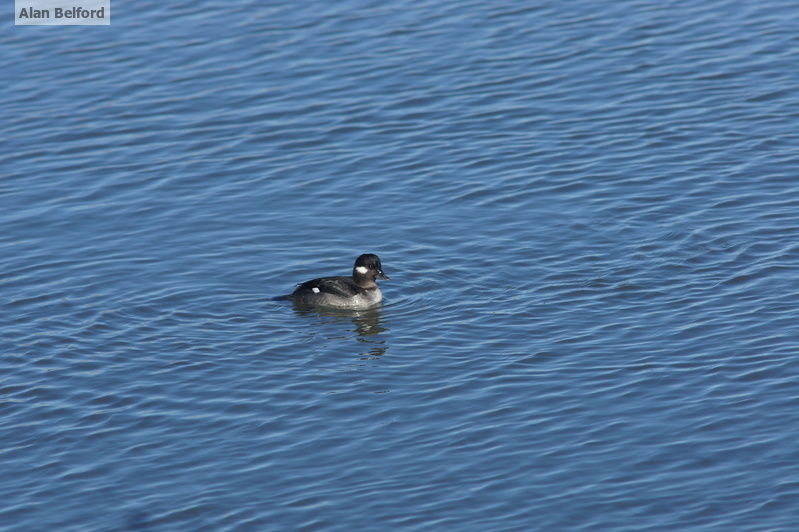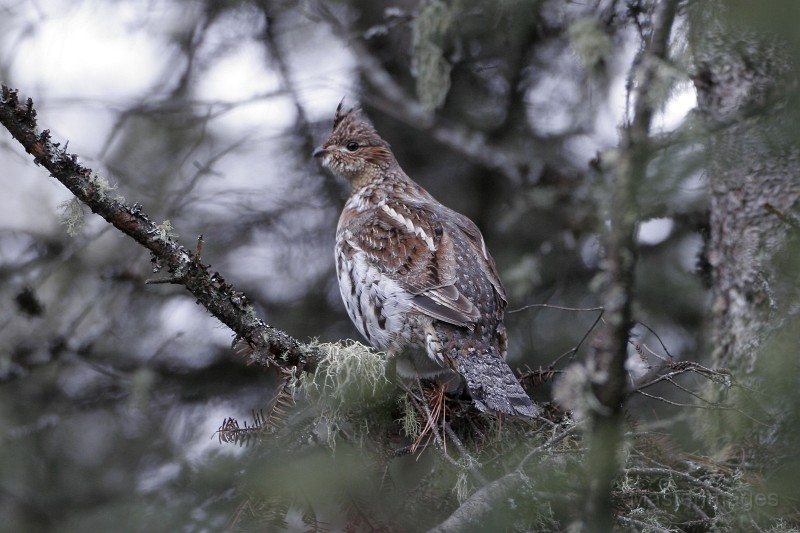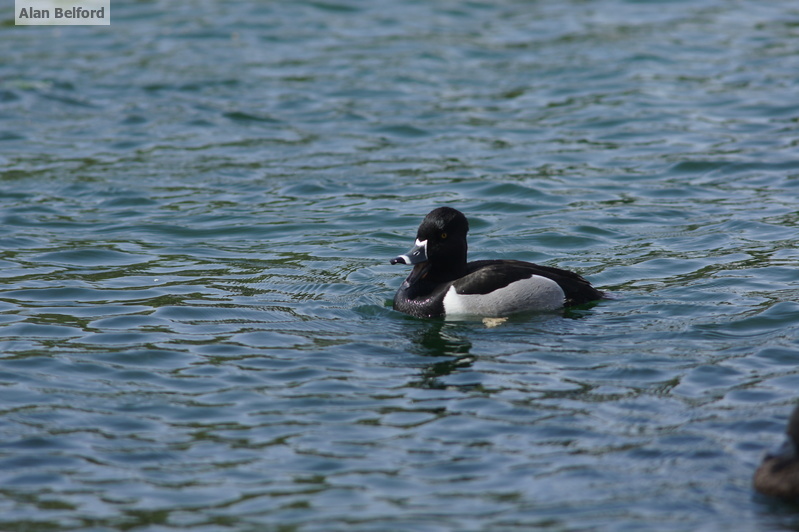Ducks on the move
With waterfowl migration beginning, I make sure to check out area lakes whenever I can. And so, when Wren, my dog, and I had a chance to explore south of Tupper Lake the other day, we were happy for the opportunity to do so. We started along the Tupper Lake Marsh Causeway where we found about a dozen Hooded Mergansers, a couple American Black Ducks, a bunch of Mallards, two Bufflehead, and a distant Bald Eagle. There will be more ducks arriving in the coming days and weeks. The causeway isn't much fun for Wren who has to be stuck in the car, so we drove south into Hamilton County — the heart of the Adirondacks — where we could both explore more.

We first checked out Little Tupper Lake, driving into the headquarters complex where Wren played on the beach while I scanned the dark water beneath a gray sky. I only found a couple Common Loons as I scanned, but the woods in the DEC (Department of Environmental Conservation) complex were loaded with Black-capped Chickadees, Golden-crowned Kinglets, Brown Creepers, White-breasted Nuthatches, and – more than anything else – Dark-eyed Juncos which scattered from the ground as we walked.
A short hike with Moose Tracks
We left the beach but checked out the lake from Sabattis Road – finding a Common Merganser and a group of ducks along the channel which leads into Round Lake. Scanning through the flock I could see a few Hooded Mergansers, a bunch of Ring-necked Ducks, and a lone Lesser Scaup. We would have to look them up soon with the canoe. But first, we needed a walk — so we hiked a nearby trail, finding old moose tracks as we went. They appeared to have been made before our recent snow.
The woods on our walk was relatively quiet with a few fall songbirds like Golden-crowned Kinglets, and I paused to listen to the gray stillness while Wren stood quietly watching the forest at my side. Suddenly a Ruffed Grouse exploded from the edge of the woods, its wings a flutter of speed as it twisted through the branches and it shot into the forest. Wren and I jumped in alarm and I laughed at us both – it would not be the final time we would be spooked that day. Halloween is still haunting my mind it seems.

Time to hit the water
We returned to the car and drove back to the Round Lake put-in. It was cold and overcast for a paddle, but I always try to squeeze whatever I can from the season before it is gone for good. And I made sure I had warm clothes and food should anything have gone amiss on the chilly water. Wren played at the put-in while I unloaded the gear and we set off.
My favorite part of the Round Lake paddle is the stream which connects it to Little Tupper Lake because the marshy and boggy edges of the waterway often hold birds. And even though it was late afternoon on a frosty day, species like American Robin, Black-capped Chickadee, and Golden-crowned Kinglet led us along our course, as we glided past ranks of beaver lodges.

But it was the ducks I was most keen on finding. They had moved further out the stream from where I first saw them from the road, and I was unable to re-find the Hooded Mergansers which apparently had flown off in the meantime. But the Ring-necked Ducks – with the one Lesser Scaup – were tucked along the waterway feeding. There was no hiding from them in our boat – especially with our bright yellow pfds, and I had to be ready with my binoculars at each bend in the stream.
Group after group of Ring-necked Ducks took off whenever they saw us coming – flying low and landing further along the channel – only to be spooked by us again. But the ducks eventually tired of this game and the flocks began to launch higher, wheel in the sky on whirling wings, and then head to another body of water. Wren – who was trying to relax in the boat – startled at the sound whenever they came overhead, and we watched the zipping flocks head out of sight. 
We reached Round Lake in a growing headwind, and rather than fight it we turned to paddle back in day light. It was going to be a chilly evening and I didn't want to load the boat in the dark. With the ducks moved on from the stream, our return trip was marked by beavers – the occupants of the lodges which had dotted our way to the lake. I had seen one large beaver on our way out, but soon spotted several of them along the waterway. One sat munching vegetation on a muddy spot in the middle of the stream, slipped off, and then slapped its tail loudly on the water. It then slid quietly along behind us and smacked its tail again, making us jump like the grouse had done earlier. It set off a chain reaction down the stream as the beavers seemed to hand us off to each other for tail-slapping harassment. I kept my eyes open to spot the next beaver before it caught me by surprise, but Wren kept lying down to doze, only to be startled and sit up with each splash – her eyes searching for the beavers across the dark water.
As we neared the take-out we were startled one last time – this time by a sound like a zipping, hissing wind which shot low overhead. As if they were intentionally trying to scare us for chasing them off earlier, a flock of 8 Ring-necked Ducks whirred low overhead – perhaps still looking for a place to spend the night. Wren seemed happy that we were back to shore, I loaded up the boat on the rapidly cooling evening, and we drove home for a warm meal.
Fall and early winter offer great chances to explore the natural world. Plan your trip at our outdoor recreation, lodging, and dining pages today.






